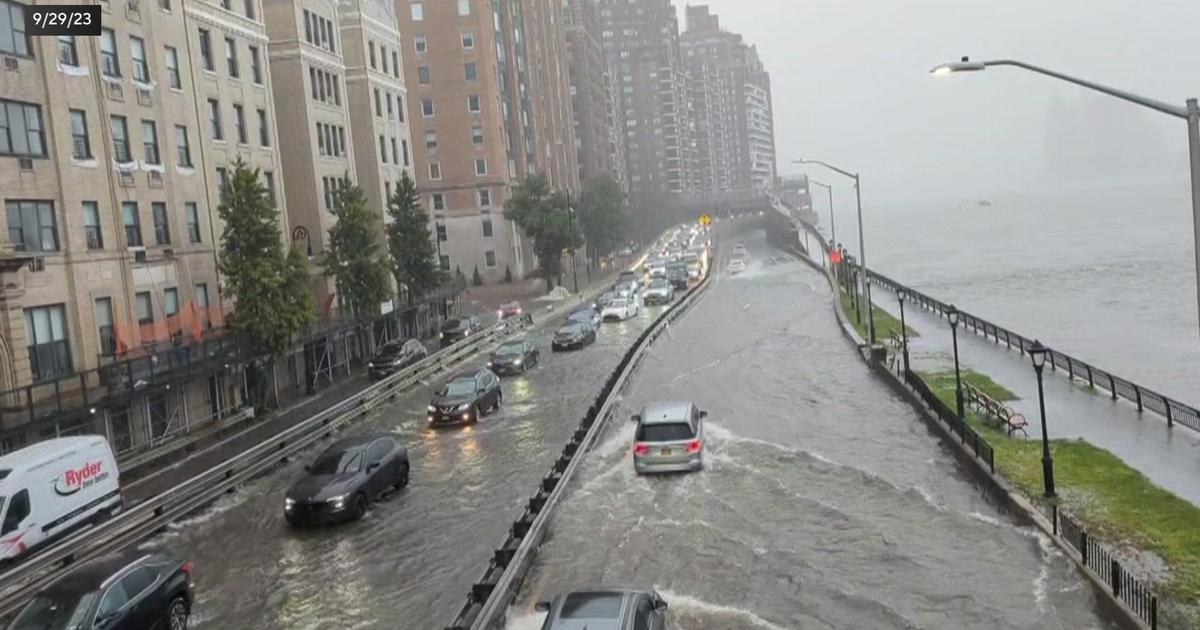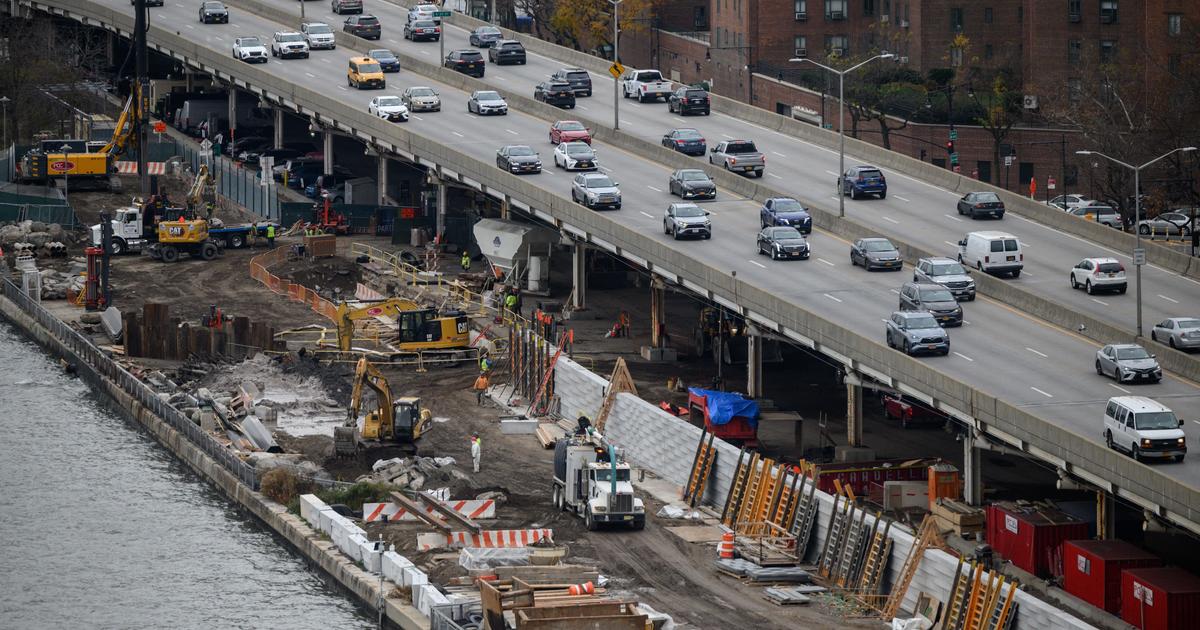New York City Set To Unveil Lower Manhattan Waterfront Protection Plan
NEW YORK (CBSNewYork) -- The potential future of the Lower Manhattan waterfront is expected to be revealed Wednesday night at a virtual public meeting.
However, CBS2's Vanessa Murdock got an early look at the plan earlier in the day.
When Superstorm Sandy hit, there was little to stop the 13-foot storm surge that filled the Brooklyn Battery Tunnel, ruining basement equipment in high-rises, and devastating small businesses.
Linda Marini, then-owner of Barberini, said 8 feet of water engulfed her Front Street restaurant, the high water line visible on the bathroom mirror.
"We did not feel that we were protected here after an experience like that," Barberini said.
She moved to the highest ground in the Financial District and opened Da Claudio.
"It has been a long time coming to see what the city would do to protect the waterfront," Marini said.
On Wednesday night, the city will unveil the FiDi-Seaport Climate Resilience Plan, covering Lower Manhattan and reimagining the shoreline for protection and also creating a destination.
"We need to elevate the space we are currently on by several feet to make sure the tide of the future does not come over onto land," added Elijah Hutchinson, VP of Waterfronts for the New York City Economic Development Corporation.
The Mayor's Office of Climate Resiliency says neighborhood complexity posed the biggest challenge in dreaming this up.
"Given the network of transportation that we have here, ferry system, subway system, underground utilities," deputy director Carrie Grassi said.
The city says the plan will protect against sea level rise, coastal storms, and freshwater flooding.
It will feature a two-tiered esplanade, with the the first tier elevated to roughly a foot above a Sandy high-water mark and expanded out into the East River by roughly 200 feet. The second tier will sit about two stories high. There will be a few floodgates that close off and secure the neighborhood.
"The gates are actually hidden beneath the earth," Hutchinson said.
Green infrastructure a big part of the plan, too:
"Innovative drainage techniques, soft-scapes, planting," Hutchinson said.
By 2100, sea level could rise by 6 feet. Hutchinson said if nothing is done, the neighborhood could experience daily tidal flooding.
"The only way New York survives as the greatest city in the world 100 years from now is by effectively deploying a solution to this problem," said Capt. Jonathan Boulware, CEO of South Street Seaport Museum.
"The number one concern is how long will it take to get the funding? How long will it take to implement the plan? We can't wait," added Catherine McVay Hughes, a member of the Coalition for FiDi-Seaport Master Plan.
Federal funding is a must to bring this plan to life. The total cost estimate is now $5 billion to $7 billion. Hutchinson said he hopes the project breaks ground within a decade. Completing it will take 15-20 years.
There is another public session Thursday evening. If you're interested in attending, please click here.



